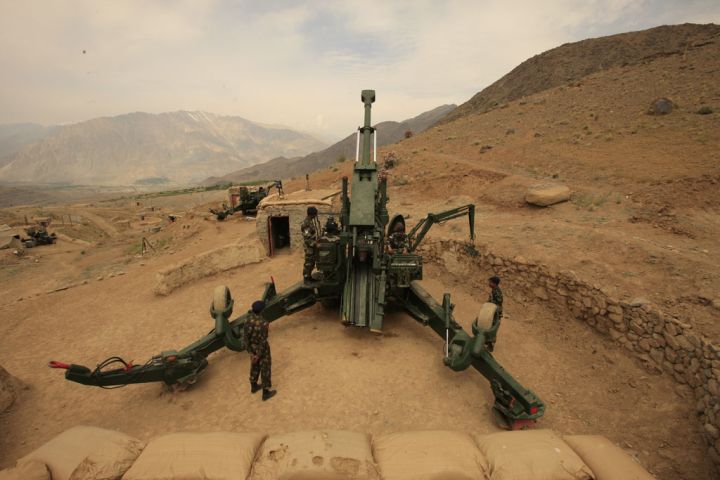India should learn from Pakistan how not to experiment with its armed forces... A politicized military and a militarized society will wreck India the way they have destroyed the social and political fabric of India’s neighbor. A politicized military will be a permanent threat to Indian democracy...
Shome Basu
The Prime Minister Narendra Modi government’s new military recruitment scheme for soldiers — rifleman, sailor or an airman — has proved to be most controversial in the Indian Army’s history. The scheme called Agneepath has been floated as a Tour of Duty. The scheme envisages recruitment of one million Agniveers over the years – with 46,000 recruitments in the first year. The young agniveers – aged between 17 and 23 years – will get a salary of between INR 30,000 during their 6-month training and INR 40,000 for the remainder of their four-year stint in the military and receive INR 1.171 million when they retire after four years. The military will retain about 25 percent of them as permanent full-time soldiers while 75 percent of them will have to look for work elsewhere. The government calls Agneepath a major military reform and argues that the country needs more soldiers on two of India’s fronts – with Pakistan and China. The idea is not new. Late General Bipin Rawat India’s first chief of defense staff (CDS) once enthusiastically endorsed a ‘two-front war’ which many in the army looked as an over ambitious option.
Violent protests have erupted where youths who have planned career in the armed forces have come against such a scheme calling it absurd and illogical. Protests emerged in such scales that public property has been vandalized and politicians hurling abuses and harsh words at each other. Protesters who are future candidates for the military forces are against this four-year contract in which the first six months will be spent in training. As far as the young Indians who want to make a career in the military are concerned the most important objection to the scheme is what will they do after they “retire” after the 4-year stint in the army. Leaders in the BJP-ruled states such as Haryana chief minister Manohar Lal Khattar have countered this argument by saying that many of them would be rehired by the Central Armed Police forces (CAPF) and the state police. Also, CAPF which reports to the Home Ministry has been strengthened not only to secure the country’s internal security but if needed to counter a coup d’état by the military if needed. BJP general secretary Kasilash Vijayvargia assured jobs as security guards at the BJP offices across the country in order to calm down protesters. On the other hand, opposition leader and former finance & home minister P. Chidambaram has called it a faulty scheme and argued that police are not trained to kill the enemy. However, the opposition and some commentators fear that the scheme put an end to the apolitical character of the Indian military and making the society militarized and violent.
India’s founding fathers had envisioned Indian military as an apolitical arm of the government. On September 12, 1946, Jawaharlal Nehru, the future prime minister of India wrote a letter to the then Commander-in-Chief Sir Claude Auchinleck about the need of army reforms targeting the martial race recruitment policy and making it mixed. This letter came in the wake of deadly communal riots in Calcutta in August. The army was used at that time to bring law and order as over 6,000 persons got killed in the city. A year later when Gen Auchinleck left, Prime Minister-designate Nehru moved to the Flag Staff House — the second biggest residence after what we call today the Rashtrapati Bhawan — in what was a symbolic message to the military as to who is the boss. With an army raised under martial race theory Indian government was in a speed to create a mixed battalions and cross out the word martial from the Indian military lexicon. Next was to make army an apolitical section of the government when all the decisions in democratic India were taken by the politicians. Nehru wanted to keep the armed forces away from politics because he anticipated coup d’état at any stage. Whenever a retired general wanted to dabble in politics, he was sent off with a plum posting abroad as India’s ambassadors. Thus, India built a military based on heterogeneous cadres and an apolitical system. Agneepath may change the apolitical character of the India army.
Former chief minister of Karnataka and Janata Dal leader Kumaraswamy –– sees RSS’s (Rashtriya Swayamsevak Sangh) “hidden agenda” behind Agneepath. Kumaraswamy has equated Agneepath with the policies of Hitler and the Nazi Party. There is a fear that agniveers would find it difficult to get a job with the kind of training they would have. The young men may form their own militias or join the political parties. Soldiers take years to be trained and become skilled riflemen or gunners… In this case it is still unclear what exactly would these young men do as soldiers (barring Signals, armored, nuclear, artillery, engineering and sappers in the army). A former military officer told me that the Agneepath scheme will create a war-within-situation instead of a war-on-two-fronts. Professional soldiers are required to serve for a longer term — with proper pensions, insurances, post retirement facilities — and not loitering as ex-servicemen by the age of twenty-one. The Agneepath scheme seems a blot on the professional Indian Army that has grown and fought for the last seventy-five years for the country.
The Agneepath scheme will push the Indian army closer to politics — something General Thimayya warned against years ago — and will also be producing an army of disgruntled and armed youth who will militarize the society. Prime Minister Narendra Modi has been a cheerleader for the armed forces — the prime minister himself wore combat uniform without any rank while addressing the army. If he cares for a robust apolitical military, he should withdraw the scheme and let the soldiers remain professional and grow with their regiments, gain experience, take decisions and secure the borders as professional soldiers. India should learn from Pakistan how not to experiment with its armed forces and why India needs an apolitical military. A politicized military and a militarized society will wreck India the way they have destroyed the social and political fabric of India’s neighbor. A politicized military will be a permanent threat to Indian democracy and a militarized population will destroy the social fabric of the Indian society.
Shome Basu is a prominent journalist/photojournalist. His book Shades of Kashmir published by Niyogi Books showcases lives of ordinary Kashmiris who had been sandwiched in-between the security forces and militant. He has covered war in Afghanistan and Syrian refugee crisis in Europe. He earned an EU fellowship to document the lives of Indian migrants in EU countries. He lives in New Delhi.
Follow us on Twitter @AlterVoices




